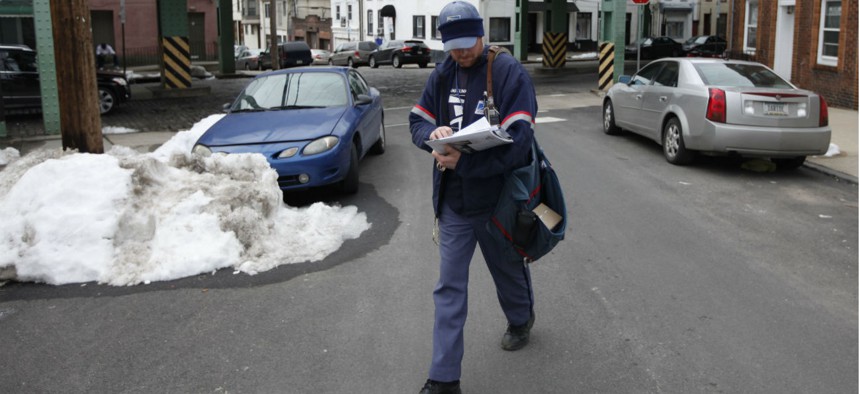Postal Service Agrees to Convert 5,000 Letter Carriers to Career Positions
Employees previously served in non-permanent jobs with less generous benefits.
The U.S. Postal Service has agreed to convert nearly 5,000 non-permanent employees to career roles, resolving a labor dispute with its largest union.
The agreement will convert any employee in the city carrier assistant position with at least 30 months of experience to a career job, giving those workers a more generous suite of benefits as well as more stable positions. USPS reached the settlement with the National Association of Letter Carriers after the union filed a national-level grievance.
Non-career employees can be more easily laid off, face less certainty in their schedules and receive less generous benefits. They now make up 20% of the USPS workforce—or about 126,000 workers—double the share allowed under previous collective bargaining agreements. NALC filed its grievance after suggesting the Postal Service violated its contractual caps on city carrier assistants.
About 3,000 employees will be converted to “part-time flexible,” positions, while 1,800 in larger offices will now serve in regular, full-time roles. Impacted workers must have 30 months of experience by Feb. 15 to qualify.
The Postal Service’s increased use of non-career workers has served as a pillar of its efforts to reduce personnel costs as the agency has struggled to regain its financial footing. Postal management has estimated it garnered $8.2 billion in savings between fiscal years 2016 and 2018, though the Government Accountability Office recently found USPS exaggerated that figure.
Non-career employees generally work more hours than their career counterparts, the auditors said, including more overtime and premium pay hours like Sundays. USPS also compared the average pay for new non-career employees to median pay for career employees at all levels, rather than the career employees' starting salaries. The agency therefore estimated a gap of $25 per hour between career and non-career employee pay, whereas GAO said the difference was actually closer to $8 per hour when accounting for all factors. Non-career workers also leave the agency at higher rates, and a USPS inspector general report found the Postal Service spent $30 million on non-career employee turnover costs in fiscal 2017.
Still, GAO said the savings from a higher number of non-career workers saved USPS $6.6 billion from 2016 to 2018.








